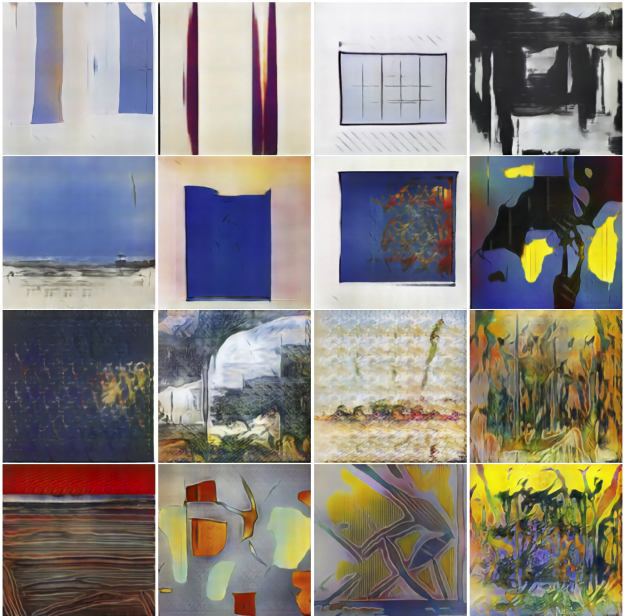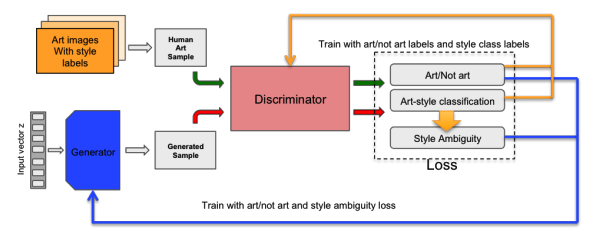A very interesting paper entitled "Creative Adversarial Networks Generating Art by Learning About Styles and Deviating from Style Norms" (pdf here) was published recently in which the authors describe a new system for generating art based on a machine learning technique they term Creating Adversarial Networks.
Some of results appear quite impressive in terms of their creativity and complexity, and the paper reports the results of a kind of "Turing test", with the overall finding that "human subjects could not distinguish art generated by the proposed system from art generated by contemporary artists and shown in top art fairs".
Some examples might be appropriate at this point (the paper contains many more): 
The machine learning algorithms used in the generation process are describe in detail in the paper, and are summarized in the following block diagram (also taken from the paper):

This field of generative art is a subject I find fascinating, but, regrettably, one I know very little about. So I am wondering whether there might be some knowledgeable members of the Community who would be willing to share their expertise on the subject. In particular, I would welcome opinions as to the feasibility of attempting something along similar lines in Mathematica.
Note that I am not looking for someone to "solve" the challenge for me; rather, what would be helpful is some further insight into process and the suitability and limitations of Mathematica as a platform for developing a CAN system.
The quite limited range of output in the Visual Arts section of the Wolfram Demonstrations catalog, wonderful as it is, suggests to me that there may be inherent limitations in Mathematica/WL that make it unsuitable as a vehicle for this kind of project. On the other hand, it could just be that relatively few Mathematica users have the luxury of spending time on such projects. There may exist development platforms far better suited to this kind of effort than Mathematica, for all kinds of reasons (processing speed being perhaps one of them; limitation of graphical capabilities perhaps another); but if so, I am unaware of any.
I am hoping that members of the Community will be able to help me along the learning curve of this fascinating topic.